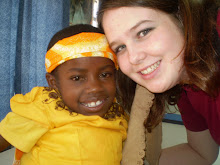I worked on a Trubine Otter. My jobs included pulling panels, putting them back on, and wheel bearings. on the tailwheel. I was working with a guy who used to maintain the plane, so he had a lot of knowledge as far as things likely to go wrong with this plane.

Turbine otter, from the back, with a supercub in the foreground
 TPE-331 in the nose of the otter, standing above a second cub
TPE-331 in the nose of the otter, standing above a second cub
 bearings from each side of the wheel. the one of the left is just full of sand, while the one on the right is all that remains. The pile of black stuff in the upper left corner is where most of the rollers fell out.
bearings from each side of the wheel. the one of the left is just full of sand, while the one on the right is all that remains. The pile of black stuff in the upper left corner is where most of the rollers fell out.
The otter, from DeHavilland, is really versatile. Some models were military, and the civilian side has been through many modifications, including sticking a Garrett TPE-331 under the cowling.
 TPE-331 in the nose of the otter, standing above a second cub
TPE-331 in the nose of the otter, standing above a second cubAs I was working on the tailwheel, the mechanic working with me explained the poor ability of the bearings to seal in the tailwheel. Considering the sandy beaches that he often lands on, the tailwheel is subject to a lot of foreign matter entering. As we pulled the wheel off, I realzied that it was a familiar sized tire. Most cessnas have 6x600s on the main gear, and the otter puts that wheel on the tail. The wheel popped off with no problems, and as I began looking at the bearings, i noticed some rollers missing on one side. this is a problem... I thought, pulling the bearing out. The only rollers that didnt fall out were the ones that had melted to the cage. The other mechanic said he had never seen them THAT bad.
 bearings from each side of the wheel. the one of the left is just full of sand, while the one on the right is all that remains. The pile of black stuff in the upper left corner is where most of the rollers fell out.
bearings from each side of the wheel. the one of the left is just full of sand, while the one on the right is all that remains. The pile of black stuff in the upper left corner is where most of the rollers fell out. So not only did I get to turn wrenches again, I learned a little something about otter maintenance. And what to expect if the plane lands on beaches frequently.

No comments:
Post a Comment